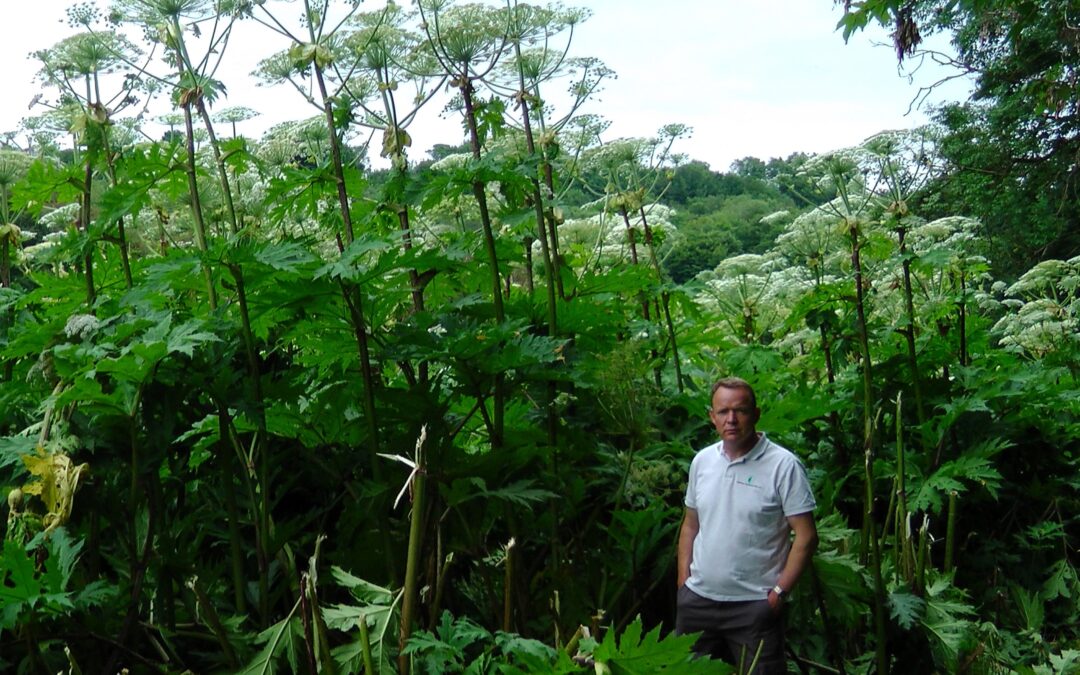Giant Hogweed Control: Best Practices for Landowners in 2024
Giant hogweed is a highly invasive and toxic plant species. That seriously threatens local ecosystems, wildlife, and human health. As a result, it is crucial for landowners to understand the best practices for controlling giant hogweed on their property. This article will provide practical and effective tips for managing giant hogweed. Protecting the environment, and preserving the health of your community.
What is Giant Hogweed?
Giant hogweed (Heracleum mantegazzianum) is a herbaceous perennial plant that is native to the Caucasus region of Eurasia. It was introduced to North America and Europe as an ornamental garden plant. This was in the early 20th century and has since escaped cultivation and established itself as a highly invasive species.
Giant hogweed is easily recognizable by its large, umbrella-shaped clusters of white flowers. Also by its huge leaves that can reach up to five feet in diameter. Despite its impressive appearance, giant hogweed is a highly toxic plant that poses a serious risk to both humans and the environment.
Why is Giant Hogweed Control Important?
Giant hogweed can have a significant impact on local ecosystems, reducing the diversity of plant life and altering the natural environment in a negative way. The plant’s toxic sap can cause skin irritation and other health problems for humans and animals that come into contact with it, and it can also limit the availability of food and shelter for wildlife in the area.
In addition,
Giant hogweed can impact the health of aquatic ecosystems by reducing the quality of the water and altering the habitat for aquatic plants and animals. Its extensive root system can lead to soil erosion and changes in the water flow and water quality, negatively affecting the health of local rivers, streams, and lakes.
Best Practices for Giant Hogweed Control
- Identification: The first step in controlling giant hogweed is to correctly identify the plant. This can be done by consulting local experts or using online resources, such as the USDA’s Giant Hogweed Identification Guide.
- Prevention: The best way to manage giant hogweed is to prevent its introduction to new areas. Landowners should avoid planting the plant in their gardens or other areas where it can spread to the wild.
- Removal: If giant hogweed is present on your property, it should be removed by trained professionals who are equipped to handle the plant safely and effectively. This may include wearing protective clothing and using herbicides to control the plant’s growth.
- Disposal: Proper disposal of giant hogweed is crucial to preventing its spread. Plants that have been removed should be placed in double plastic bags and disposed of in a landfill.
- Monitoring: After giant hogweed has been removed from your property, it is important to monitor the area for any new growth. Regular monitoring will help to ensure that the plant does not reestablish itself and cause further harm to the environment.
Giant hogweed is a highly invasive and toxic plant species that poses a serious threat to local ecosystems, wildlife, and human health.
As a result, it is crucial for landowners to understand the best practices for controlling giant hogweed on their property. By following the tips outlined in this article, landowners can play an important role in protecting the environment, preserving the health of their community, and mitigating the impact of giant hogweed. By working together, we can help to control the spread of this dangerous plant and ensure the health and well-being of our local ecosystems.
If you get giant hogweed sap on your skin, you should act quickly to minimize any potential harm. Here are the steps you should follow:
- Wash the affected area with soap and water as soon as possible. This will help to remove any sap that may still be on your skin.
- Cover the affected area with clothing to prevent further exposure to sunlight. Giant hogweed sap contains chemicals that can make your skin more sensitive to sunlight, leading to severe burns and blistering.
- Seek medical attention immediately if you experience any symptoms such as skin irritation, redness, or blistering. If you get the sap in your eyes, rinse them immediately with water and seek medical attention.
- Avoid touching the affected area or spreading the sap to other parts of your body, as this can worsen the symptoms.
It’s important to note that giant hogweed is a highly toxic plant and should be handled with extreme caution. If you come into contact with this plant, take the necessary precautions to avoid any potential harm.
